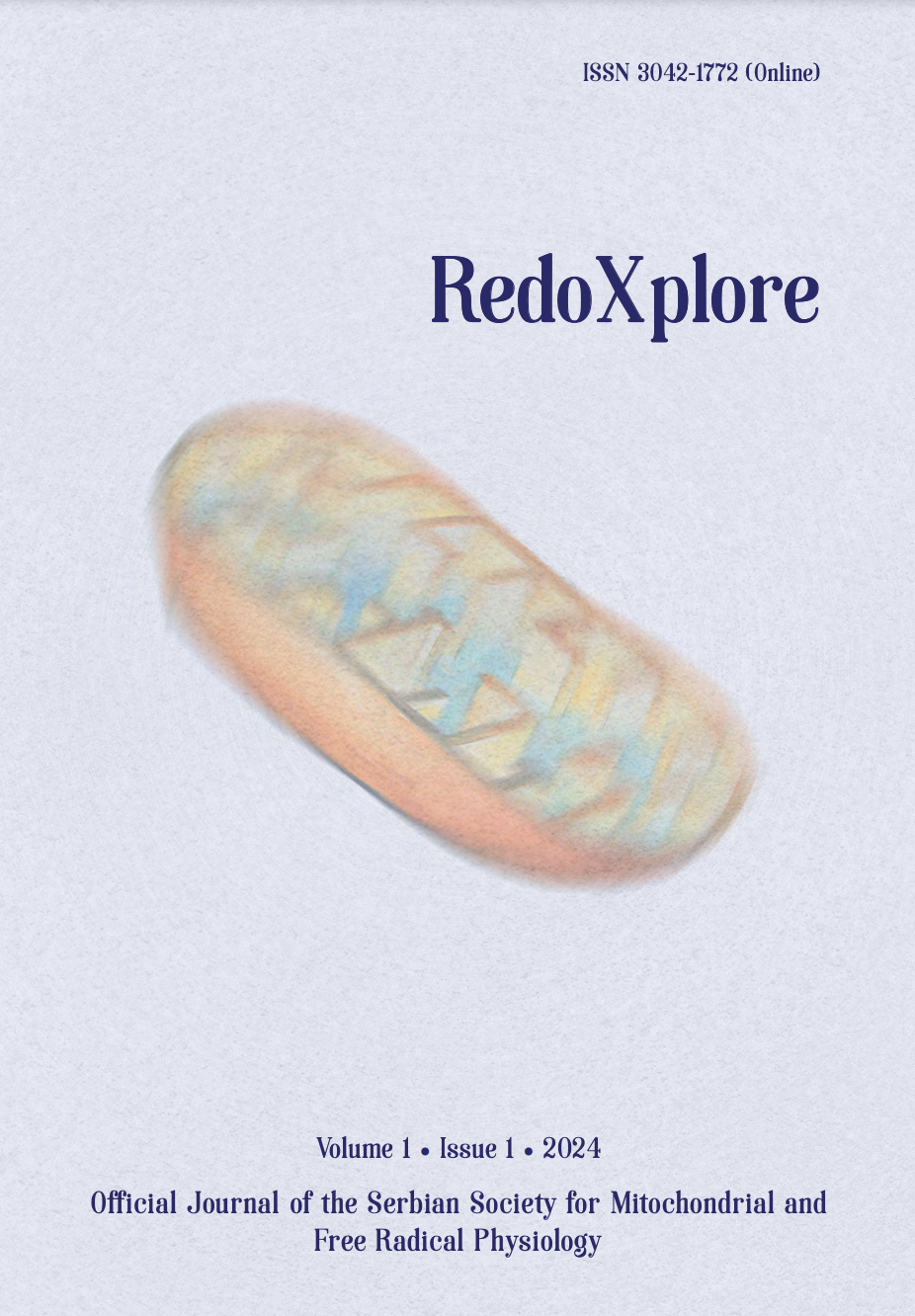
More articles from Volume 1, Issue 1, 2024
REDOX AND METABOLIC REPROGRAMMING OF BREAST CANCER CELLS AND ASSOCIATED ADIPOSE TISSUE - THE CORNERSTONES OF ADAPTIVE TUMOUR BEHAVIOUR
INSULIN MODULATES MITOCHONDRIAL STRUCTURAL AND FUNCTIONAL MOSAICISM IN BROWN ADIPOCYTES
NITRITE MITIGATES OXIDATIVE BURST IN ISCHEMIA/REPERFUSION IN BRAIN SLICES
NITRIC OXIDE, SUPEROXIDE AND PEROXYNITRITE – REDOX REGULATION OF THE CARDIOVASCULAR SYSTEM BY NITRO-OXIDATIVE STRESS AND S-NITROS(YL)ATION
DIETARY NITRATE AS PIVOT ON THE GUT MICROBIOTA-HOST REDOX COMMUNICATION
APPLICATION OF FREE RADICAL SCAVENGERS IN HUMAN LUNG CANCER CELLS IRRADIATED WITH PHOTONS AND CARBON IONS
Vinča Institute of Nuclear Sciences , Vinča , Serbia
Vinča Institute of Nuclear Sciences , Vinča , Serbia
Istituto Nazionale di Fisica Nucleare, INFN Sezione di Catania , Catania , Italy
Istituto Nazionale di Fisica Nucleare, INFN Sezione di Catania , Catania , Italy
Vinča Institute of Nuclear Sciences , Vinča , Serbia
Vinča Institute of Nuclear Sciences , Vinča , Serbia
Editor: Bato Korac
Published: 29.08.2024.
Short oral presentations
Volume 1, Issue 1 (2024)
Abstract
Ionising radiation damages DNA directly, or indirectly, causing water radiolysis and formation of free radicals. Indirect irradiation effects could be diminished in the presence of free radical scavengers, such as dimethyl sulfoxide (DMSO). Such conditions would allow the evaluation of direct radiation effects and provide a better understanding of cellular response to irradiation-induced damages. The goal of this study was to investigate the effects of low (γ-rays) and high linear energy transfer (LET) radiation (carbon ions) in non-small lung cancer cells HTB177. Cells were pre-treated with DMSO and irradiated with 60Co γ-rays and 62 MeV/u carbon ions, with doses ranging from 1-5 Gy. Results obtained by clonogenic survival and γ-H2AX foci assay showed that DMSO increased cell survival and decreased number of DNA damages, which points to radioprotective effect of DMSO. The contribution of direct and indirect radiation effects was estimated by the degree of protection (DP) in presence of DMSO. The values of DP rose in a concentration-dependent manner in all irradiated samples. In cells irradiated with γ-rays, 35% of damages were caused directly, while 65% of lesions could be attributed to indirect radiation actions. In presence of carbon ions, contribution of direct effects was 49%, while 51% of damage resulted from indirect radiation effects, showing that free radicals attain an important role in both low and high LET irradiations. The obtained results showed that DMSO can be used as a free radical scavenger to examine the direct and indirect effects on human cancer cells. The numerical Monte Carlo simulations allow modelling of direct and indirect irradiation actions in cancer cells with photons and hadrons. Therefore, this data will be used for validation and further improvement of numerical simulations in comparison to the data collected on different cell lines and irradiation energies, with the goal to improve therapeutic protocols.
Citation
Copyright

This work is licensed under a Creative Commons Attribution-NonCommercial-ShareAlike 4.0 International License.
Article metrics
The statements, opinions and data contained in the journal are solely those of the individual authors and contributors and not of the publisher and the editor(s). We stay neutral with regard to jurisdictional claims in published maps and institutional affiliations.






